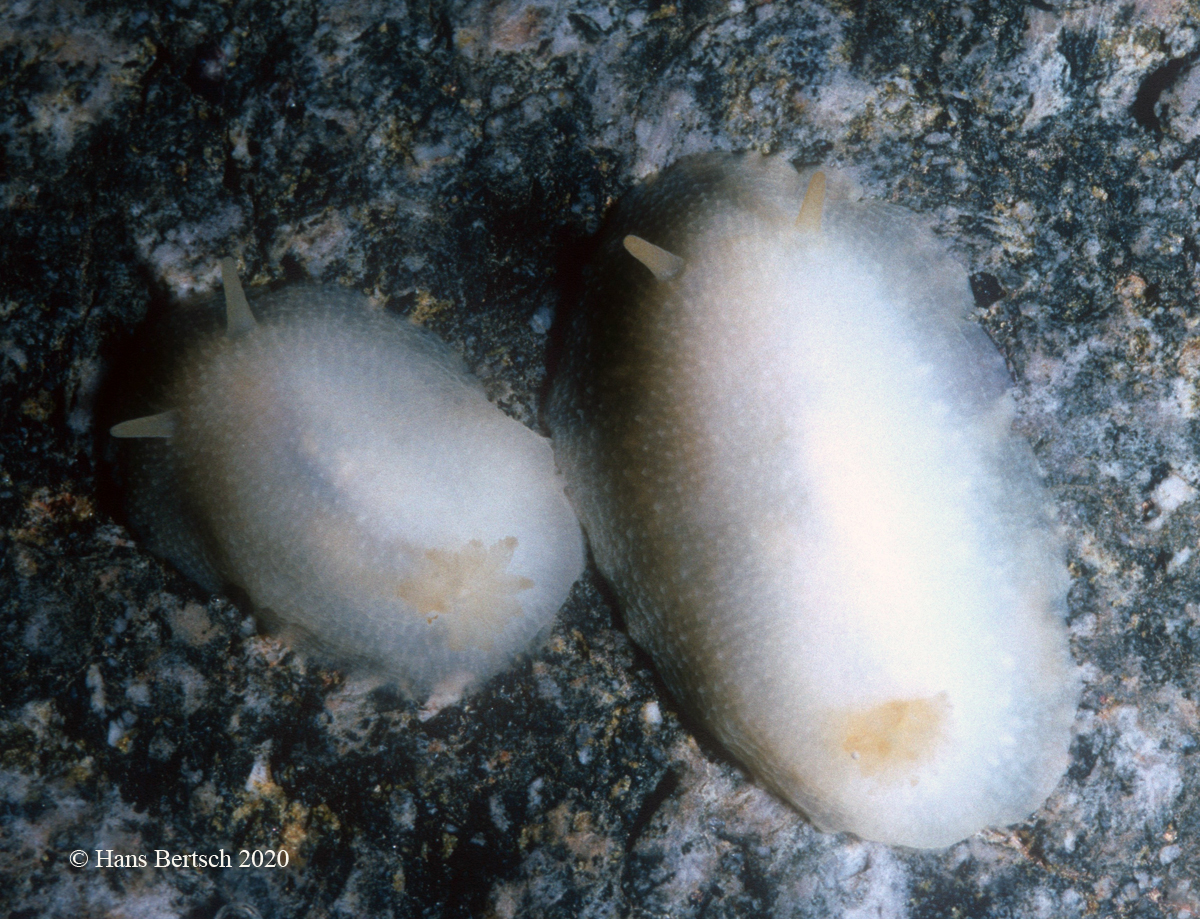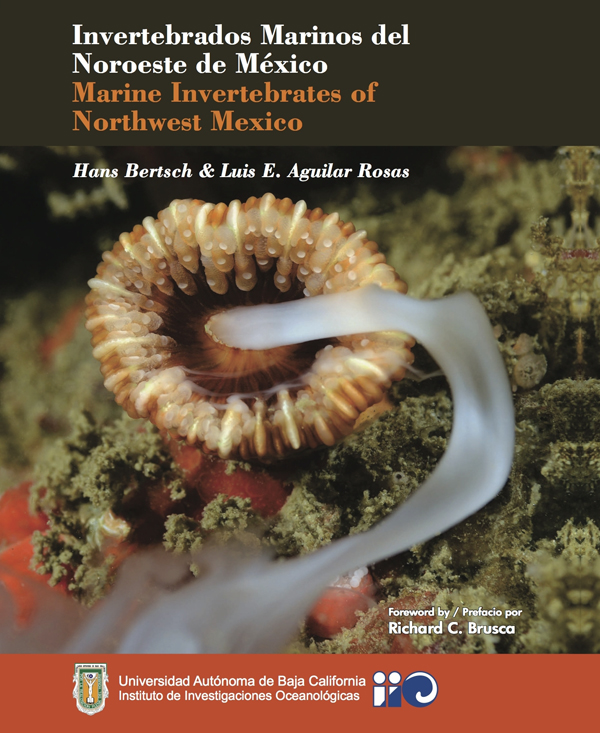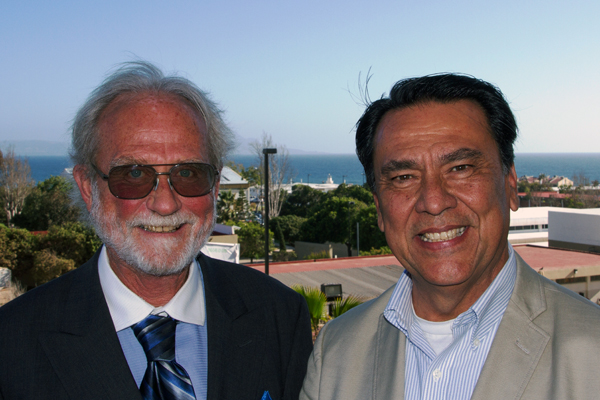 |
Image courtesy of Hans Bertsch
Punta Calerita, near Bahía Tecolote, north of La Paz, Baja California Sur
12 March 1996
 |
Conualevia marcusi Collier & Farmer, 1964 This species has a simple, nondescript coloration: white animals, although sometimes a very light orange dorsal color. The 16 unipinnate gills are concolorous with the rest of the body. Retractile rhinophores are smooth. Dorsal surface of the notum is closely papillose, giving the animal’s surface a finely textured appearance. The notal glands around the notal rim are not as evident as in C. alba. (Description from Collier & Farmer, 1964) Adults measure about 20 mm in length. Specimens are usually found under rocks. It has been reported from one mile north of Puertecitos and Puerto Refugio (Isla Ángel de la Guarda), Baja California, and from La Paz, Baja California Sur. At this point in time, all reports indicate it is a Gulf of California endemic. All records are from the Baja California coastline of the Gulf of California. No records from the eastern Gulf of California may well be a collecting artifact.
Conualevia alba is much more widely distributed. It has been reported from Carmel, California, throughout the Gulf of California, to Panamá and the Galápagos Islands.
Historical Notes. In the early 1960s, 20 years after Steinbeck and Ricketts’ (1941) observations, nudibranchs were again being studied in the Gulf of California. However, for the first time, species were named by the individuals who had collected them! First, Jim Lance (1962) named Armina convolvula, but this has since been synonymized with Histiomena marginata Ørsted in Mörch, 1859. Wes Farmer named Chromodoris norrisi (= Felimida) and Chromodoris banksi in 1963, but his C. banksi has been synonymized with Chromolaichma dalli (Bergh, 1879). Then Collier & Farmer (1964) named three species from the Gulf and Isla Cedros, all still valid: Conualevia marcusi, Polycera alabe (although this is probably a species complex) and Cerberilla pungoarena. Artistic Notes. Back in 2008, I was selling my Chevy pickup truck to Ricardo Arce (dive shop owner) at Bahía de los Ángeles. Wes and I caravanned south, he driving my pickup and I my new Jeep. While there I made a number of scuba dives, and he used a vantage point on the shore to do a painting of Isla Coronado as viewed from Cuevitas. A few weeks ago, the BOW featured the artistry of Lina Marcela Jiménez’s “babositas.” We would be remiss not sharing some of the multi-media rendering of slugs by Wes: a painting of Felimida macfarlandi (Cockerell, 1901), and resin models of Felimida norrisi, F. baumanni (Bertsch, 1970), and F. marislae (Bertsch, 1973) References Collier, Clinton L. & Wesley M. Farmer. 1964. Additions to the nudibranch fauna of the East Pacific and the Gulf of California. Transactions of the San Diego Society of Natural History 13(19): 377-396.
Farmer, Wesley M. 1963. Two new opisthobranch mollusks from Baja California. Transactions of the San Diego Society of Natural History 13(6): 81-84. Lance, James R. 1962. A new species of Armina (Gastropoda: Nudibranchia) from the Gulf of California. The Veliger 5(1): 51-54. Imperial Beach, Calif Jun., 2019 Send Hans email at hansmarvida@sbcglobal.net
|
Photo by Craig Hoover.
 |
|